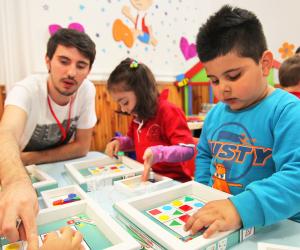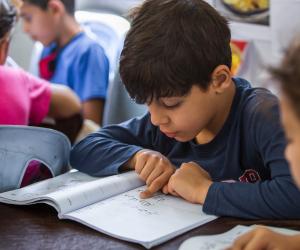Image

Research paper
Datasets
Understanding Jordan’s Principals
938
0
The main findings of the analysis are outlined below.
Principals’ Profiles
- Female principals made up a greater portion of the principal population across schools in Jordan (more than 3 in 5).
- More than 5 in 10 school principals were aged between 41-50. UNRWA school principals were slightly older, on average, than their private and MoE counterparts.
- More than 40% of MoE and private school principals reported holding higher diplomas, while the majority of UNRWA principals reported holding bachelor’s degrees. However, principals were rarely specialised in education; as most principals reported graduating with a humanities degree.
- While the average years of experience working as a principal in Jordan was comparable to principals in OECD participating countries, principals’ average years of prior experience working as a teacher was substantially lower in Jordan.
Working Conditions
- More than nine in 10 principals reported working full-time without teaching obligations. Private school principals were the most likely to report having teaching obligations compared to their counterparts across both grade levels; 10% of grade 7-10 private school principals compared to 2% of MoE and 0% of UNRWA school principals.
- Principal reports revealed the largest proportion of their time was spent on administrative and leadership tasks and meetings throughout the school year. The activities principals reported spending the least amount of time on was “other” tasks as well as interactions with the local and regional community.
- Nearly 70% of grade 1-6 and 75% of grade 7-10 school principals reported that a heavy workload and high level of responsibilities limited their effectiveness in school “to some extent” or “a lot”, while more than 30% reported a lack of job stability limited their effectiveness in schools.
- UNRWA grade 1-6 principals were the least likely to report plans to remain in the profession in the coming 5 years; 38% of principals reported that they planned on leaving the profession, when compared to grade 1-6 and 7-10 school principals across all school types.
Principals’ involvement with teachers
- Most principals seemed to be involved in teachers’ practices. More than 8 in 10 reported taking actions to support cooperation among teachers to develop new teaching practices “often” or “very often”, and more than 8 in 10 also reported meeting with their teachers at least monthly to discuss classroom planning.
- The majority of principals (4 in 5) across all school types and levels reported that their schools offer induction to new teachers.
School Climate and the Local Community
- Principals seemed to be involved directly with students across all school types. The majority of grade 1-6 (more than 9 in 10) and grade 7-10 (82%) reported handling behavioral incidents with students directly “often” or “very often”. Additionally, more than 7 in 10 principals reported setting high expectations for their students “often” or “very often”.
- Principal reports showed schools and principals try to engage with the wider community as well. For example, 97% of principals reported offering parental meetings and student progress reports. Additionally, more than 3 in 5 UNRWA principals reported collaborating with other school peers “often” or “very often”.

